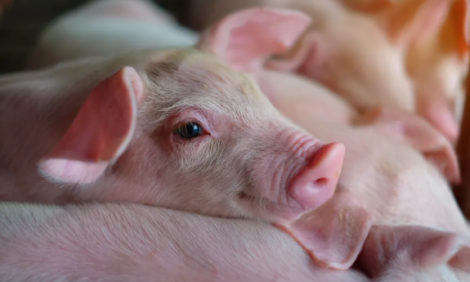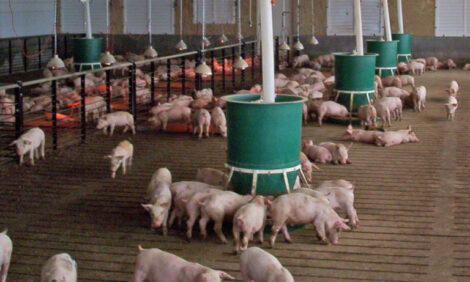



Development of Sustainable Precision Farming Systems for Swine: Estimating Real-Time Individual Energy and Nutrient Requirements in Growing–Finishing Pigs
Researchers in Santa Maria, Brazil, have found that their model allows the dynamic estimation of each pig's energy and nutrient requirements, taking into account its feed intake and growth changes.The development and evaluation of a mathematical model used to estimate the daily energy and nutrient requirements of individual growing-finishing pigs were the aims of a study carried out at the Federal University of Santa Maria in Brazil by L. Hauschild and colleagues and published in the latest issue of Journal of Animal Science.
The researchers explain that their model includes empirical and mechanistic model components. The empirical component estimates daily feed intake (DFI), bodyweight (BW) and daily gain (DG) based on individual pig information collected in real-time. Based on DFI, BW and DG estimates, the mechanistic component uses classic factorial equations to estimate the optimal concentration of amino acids that must be offered to each pig to meet its requirements.
The model was evaluated with data from a study that investigated the effect of feeding pigs with a three-phase or daily multi-phase system. The DFI and BW values measured in this study were compared with those estimated by the empirical component of the model. The coherence of the values estimated by the mechanistic component was evaluated by analysing if it followed a normal pattern of requirements. Lastly, the proposed model was evaluated by comparing its estimates with those generated by the existing growth model (InraPorc). The precision of the proposed model and InraPorc in estimating DFI and BW was evaluated through the mean absolute error.
The empirical component results indicated that the DFI and BW trajectories of individual pigs fed ad libitum could be predicted 1-day (DFI) or 7-day BW ahead with the average mean absolute error of 12.45 and 1.85 per cent, respectively. The average mean absolute error obtained with the InraPorc for the average individual of the population was 14.72 per cent for DFI and 5.38 per cent for BW.
Major differences were observed when estimates from InraPorc were compared with individual observations. The proposed model, however, was effective in following the change in DFI and BW for each individual pig. The mechanistic model component estimated the optimal standardized ileal digestible lysine to net energy (NE) ratio with reasonable between animal (average CV=7 per cent) and overtime (average CV=14 per cent) variation.
Thus, the energy and nutrient requirements estimated by model are animal- and time-dependent and follow, in real-time, the individual DFI and BW growth patterns.
The proposed model can follow the average feed intake and feed weight trajectory of each individual pig in real-time with good accuracy.
Based on these trajectories and using classical factorial equations, the model makes it possible to estimate dynamically each individual's energy and nutrient requirements, taking into account animal's intake and growth changes.
Reference
Hauschild L., P.A. Lovatto, J. Pomar and C. Pomar. 2012. Development of sustainable precision farming systems for swine: Estimating real-time individual energy and nutrient requirements in growing-finishing pigs. J Anim Sci. 27 January 2012. (Epub ahead of print)
Further Reading
| - | You can view the full report (fee payable) by clicking here. |
February 2012








